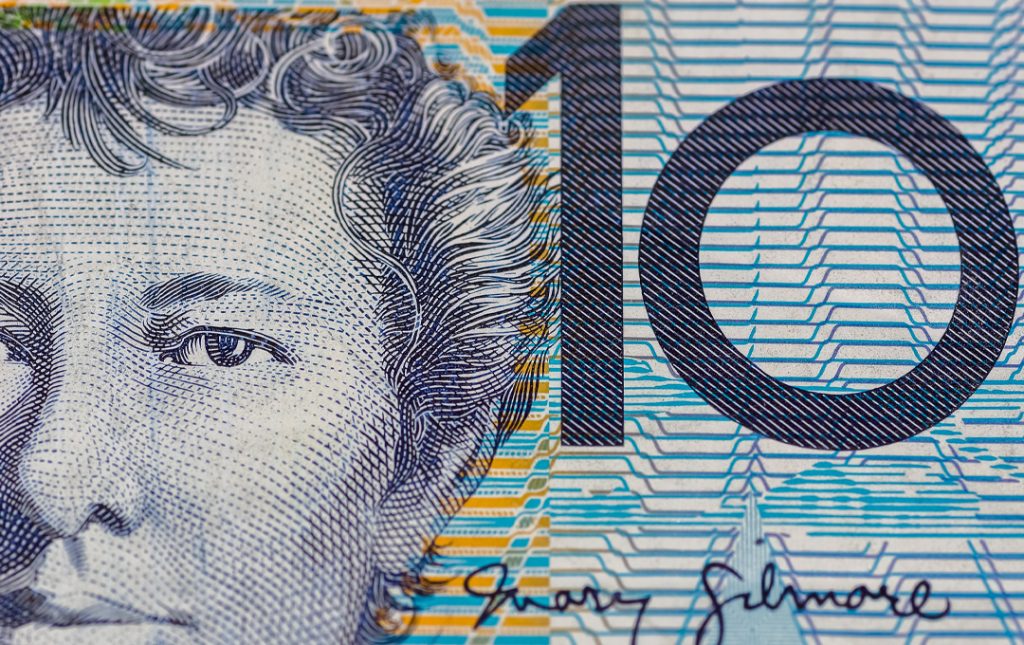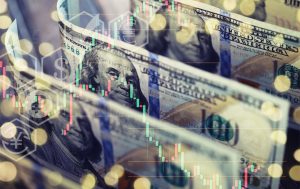The Australian dollar (AUD) held below $0.665, hovering near its lowest levels in over three weeks. The currency’s recent decline was driven by China’s unexpected decision to cut key interest rates, which negatively impacted the AUD due to Australia’s economic reliance on exports to China. Furthermore, weaker commodity prices also pressured the local currency, given Australia’s status as a net exporter of energy and metals.
Despite these challenges, the Australian dollar outperformed its peers in the first half of July. This strength was fueled by speculation that the Reserve Bank of Australia (RBA) might hike rates in August, following a hot inflation report for May. Additionally, stronger-than-expected job additions in June indicated tight labor market conditions, although the unemployment rate edged up to 4.1% from 4%.
Currently, markets see around a 20% chance of an RBA rate hike in August.
Key Points:
- With BOJ Likely to Raise Rates, Dollar Falls Versus Yen: The U.S. dollar weakened against the yen after two straight days of gains, reflecting market anticipation of the Bank of Japan (BOJ) potentially raising interest rates.
- Dollar Rises Versus Yuan After China Rate Moves: Following China’s rate cuts, the U.S. dollar firmed against the yuan, rising 0.1% to 7.29 yuan in offshore trading.
- Investors Brace for Launch of Ether ETFs: Market participants are closely watching the upcoming launch of exchange-traded funds (ETFs) tracking ether, the world’s second-largest cryptocurrency.
Market Reactions and Speculations:
The U.S. dollar showed slight gains on Monday in quiet trading as investors processed U.S. President Joe Biden’s decision to end his re-election campaign. This scenario introduces potential volatility into the currency market. Against the yen, however, the dollar weakened, as market participants anticipated crucial Federal Reserve and Bank of Japan monetary policy meetings next week.
The Federal Reserve (Fed) might signal readiness to start its easing cycle by September, contrasting with the BOJ, which could begin raising interest rates. This divergence could boost the yen. Despite these developments, investor attention remains focused on the U.S. presidential race.
President Biden has endorsed Vice President Kamala Harris to replace him as the Democratic candidate in the upcoming election. Harris quickly received endorsements from many within the party, including former U.S. House of Representatives Speaker Nancy Pelosi. The dollar index (DXY), a measure of its value relative to a basket of foreign currencies, rose 0.1% to 104.32.
Central Bank Policy Expectations:
Analysts noted that the yen might be at a turning point against the dollar, as the Fed nears rate cuts while the BOJ is expected to tighten monetary policy soon. Both the Fed and the BOJ will hold two-day policy meetings on July 30-31. Money markets have nearly fully priced in a Fed rate cut by September.
Currency Movements:
- USD/JPY: The greenback fell 0.3% versus the yen to 157.10.
- EUR/USD: The euro was flat against the dollar at $1.0886.
- AUD/USD: The Australian dollar sank 0.7% to $0.6640 after initially gaining on news of Biden’s withdrawal.
Cryptocurrency Market:
In cryptocurrencies, the focus is on the impending launch of ether ETFs. Market players, however, are cautious about the extent of new money these ETFs will attract, noting that bitcoin has become somewhat isolated with limited spillover effects into the broader crypto market. Ether was last down 0.3% at $3,496, while bitcoin rose 1.8% to $68,182.
As these developments unfold, market participants will closely monitor central bank actions, economic data releases, and political events, which are likely to drive currency and commodity movements in the coming weeks.



